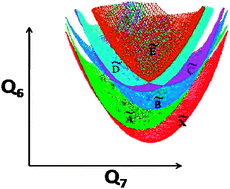Theoretical study of electronically excited radical cations of naphthalene and anthracene as archetypal models for astrophysical observations. Part I. Static aspects†‡
Abstract
Motivated by the recent discovery of new diffuse interstellar bands and results from laboratory experiments, ab initio quantum chemistry calculations are carried out for the lowest six electronic states of


 Please wait while we load your content...
Please wait while we load your content...